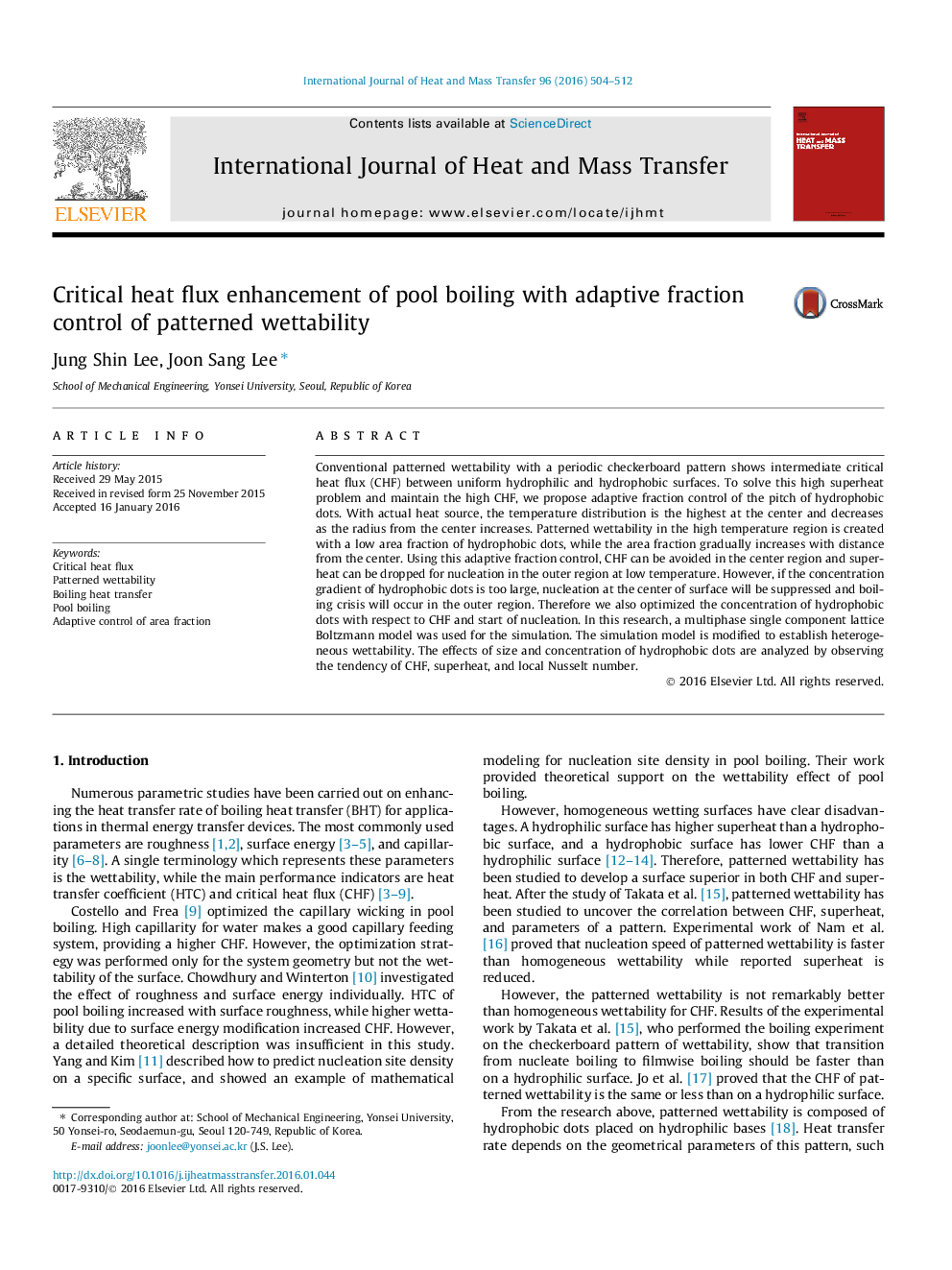| Article ID | Journal | Published Year | Pages | File Type |
|---|---|---|---|---|
| 7055880 | International Journal of Heat and Mass Transfer | 2016 | 9 Pages |
Abstract
Conventional patterned wettability with a periodic checkerboard pattern shows intermediate critical heat flux (CHF) between uniform hydrophilic and hydrophobic surfaces. To solve this high superheat problem and maintain the high CHF, we propose adaptive fraction control of the pitch of hydrophobic dots. With actual heat source, the temperature distribution is the highest at the center and decreases as the radius from the center increases. Patterned wettability in the high temperature region is created with a low area fraction of hydrophobic dots, while the area fraction gradually increases with distance from the center. Using this adaptive fraction control, CHF can be avoided in the center region and superheat can be dropped for nucleation in the outer region at low temperature. However, if the concentration gradient of hydrophobic dots is too large, nucleation at the center of surface will be suppressed and boiling crisis will occur in the outer region. Therefore we also optimized the concentration of hydrophobic dots with respect to CHF and start of nucleation. In this research, a multiphase single component lattice Boltzmann model was used for the simulation. The simulation model is modified to establish heterogeneous wettability. The effects of size and concentration of hydrophobic dots are analyzed by observing the tendency of CHF, superheat, and local Nusselt number.
Related Topics
Physical Sciences and Engineering
Chemical Engineering
Fluid Flow and Transfer Processes
Authors
Jung Shin Lee, Joon Sang Lee,
